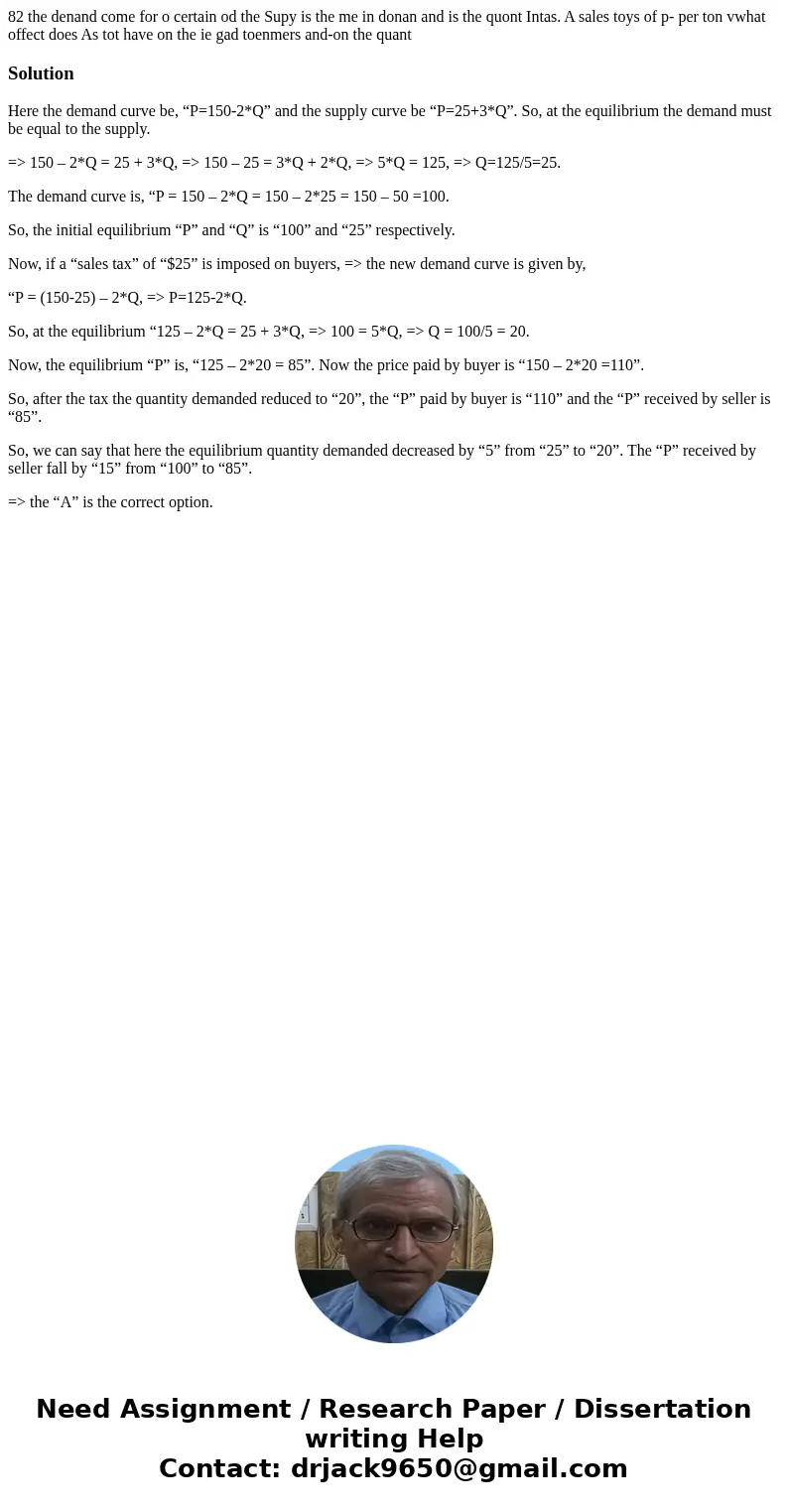82 the denand come for o certain od the Supy is the me in do
Solution
Here the demand curve be, “P=150-2*Q” and the supply curve be “P=25+3*Q”. So, at the equilibrium the demand must be equal to the supply.
=> 150 – 2*Q = 25 + 3*Q, => 150 – 25 = 3*Q + 2*Q, => 5*Q = 125, => Q=125/5=25.
The demand curve is, “P = 150 – 2*Q = 150 – 2*25 = 150 – 50 =100.
So, the initial equilibrium “P” and “Q” is “100” and “25” respectively.
Now, if a “sales tax” of “$25” is imposed on buyers, => the new demand curve is given by,
“P = (150-25) – 2*Q, => P=125-2*Q.
So, at the equilibrium “125 – 2*Q = 25 + 3*Q, => 100 = 5*Q, => Q = 100/5 = 20.
Now, the equilibrium “P” is, “125 – 2*20 = 85”. Now the price paid by buyer is “150 – 2*20 =110”.
So, after the tax the quantity demanded reduced to “20”, the “P” paid by buyer is “110” and the “P” received by seller is “85”.
So, we can say that here the equilibrium quantity demanded decreased by “5” from “25” to “20”. The “P” received by seller fall by “15” from “100” to “85”.
=> the “A” is the correct option.

 Homework Sourse
Homework Sourse